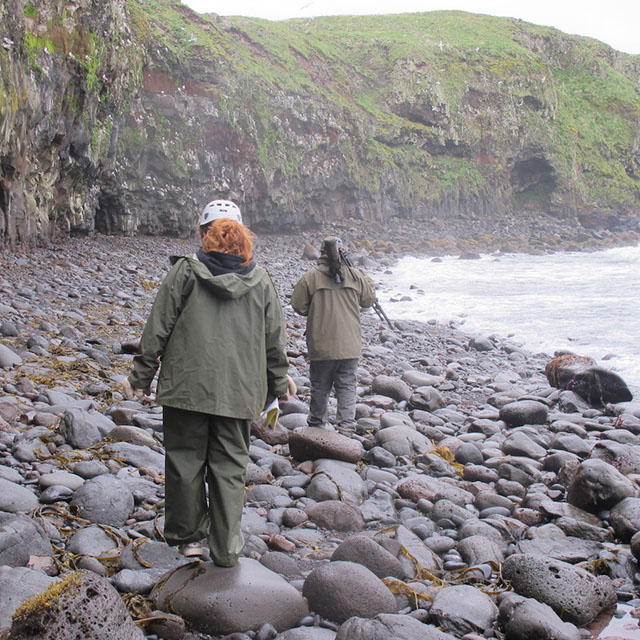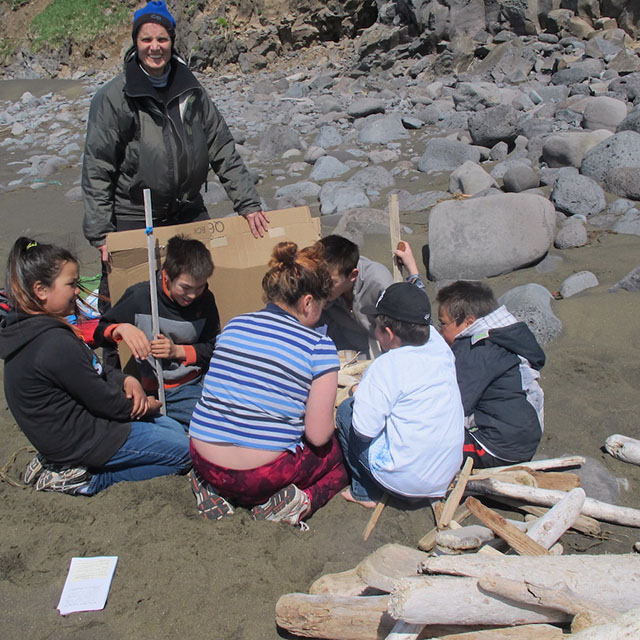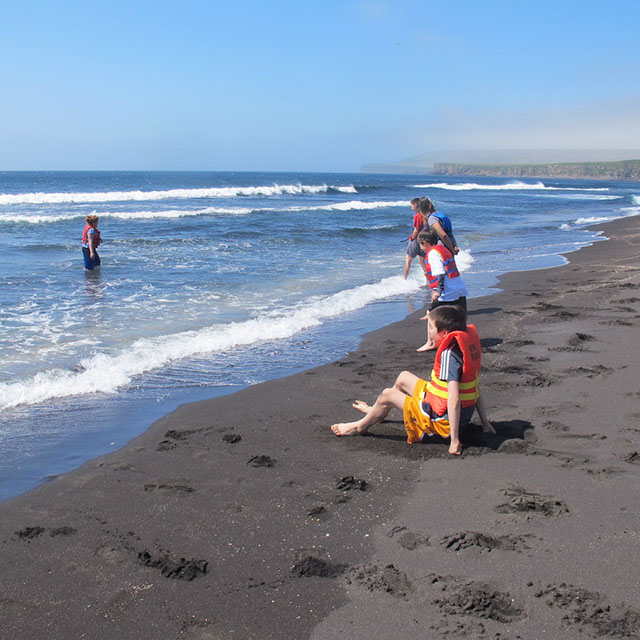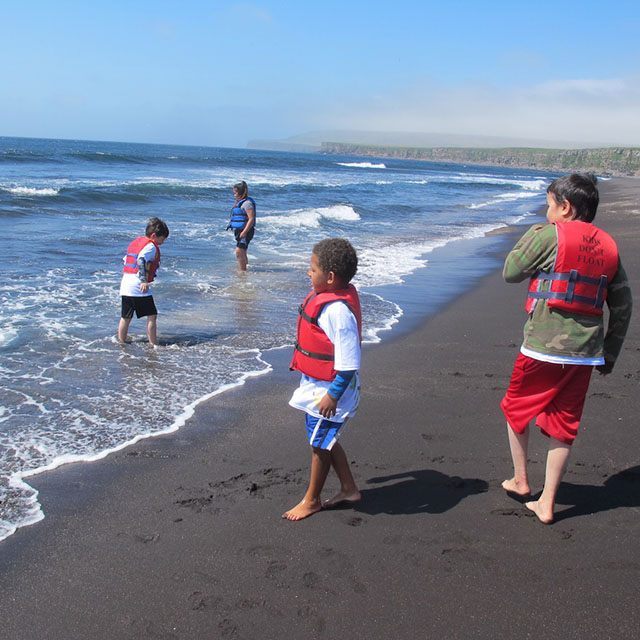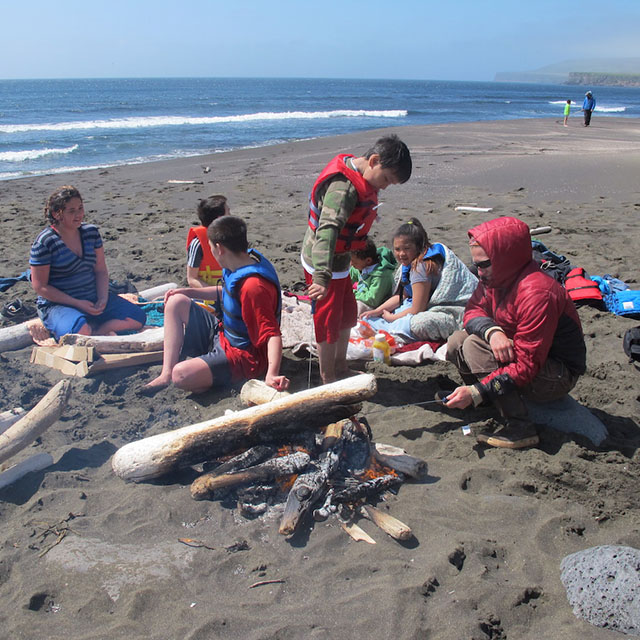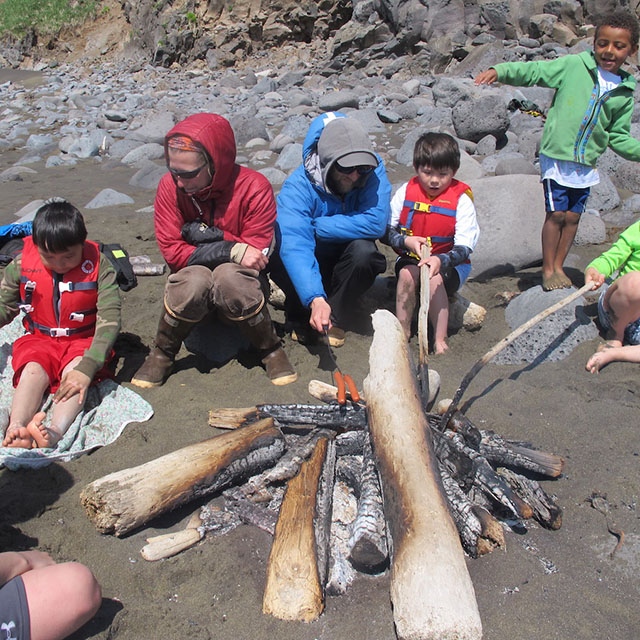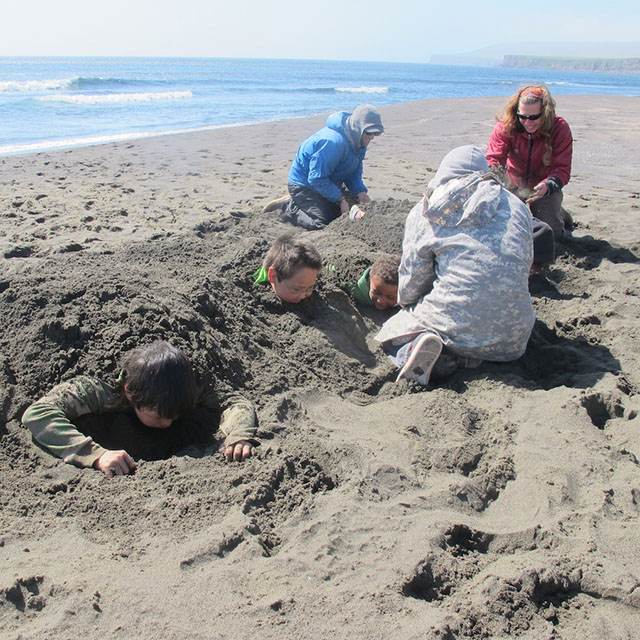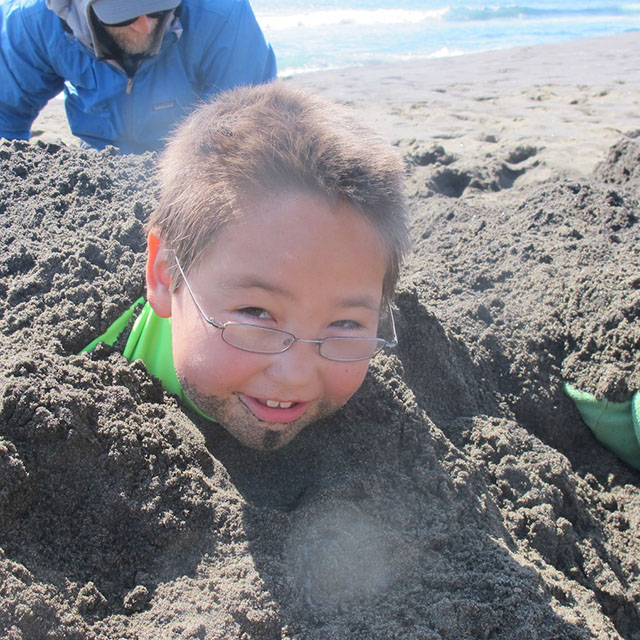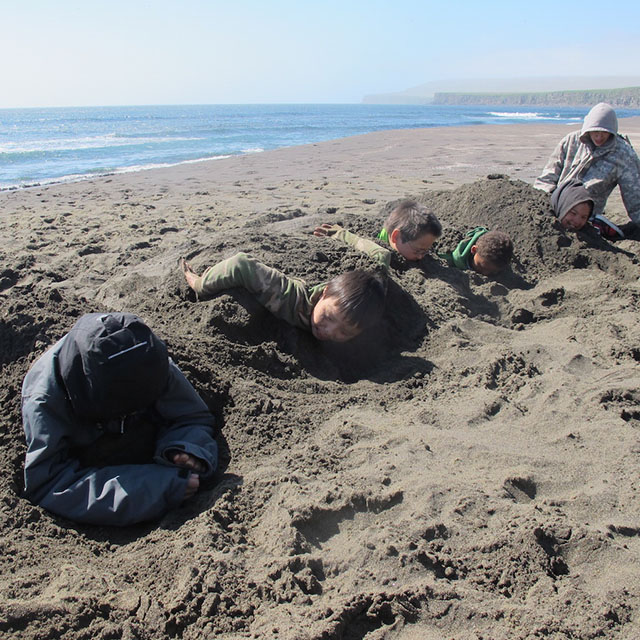Makayla and Ann got up early and joined Jason for kittiwake resighting at the village cliffs. The Refuge monitor about 200 individual color-banded black and red-legged kittiwakes for adult survival. It was a treat to walk under the cliffs and be able to watch and listen to the birds so closely. We saw a number of color-banded kittiwakes, and learnt how to record these data in the notebook. Left Leg First (top to bottom), then Right Leg (top to bottom). Many of the birds had a single color band with a number engraved on it. Other birds were older and had a unique color combination (or code) with 5 colored bands. Kittiwakes can live for up to 35 yrs old! Thank you to Jason for showing us your plot.
Everyone met up at the school at 1pm and learnt about seabird feeding behavior. We learnt all the different ways seabirds catch their food and deliver it to their chick at the colony. We then discussed how prey size, quality, density, depth, and distance from the colony all influence the availability of prey to breeding seabirds.
We compared a tufted puffin with a thick-billed murre. Puffins can carry multiple prey items back to the chick, and both parents can forage simultaneously, leaving their chick safe in the burrow. In contrast, the tufted puffin can only carry one prey at a time, and one parent needs to stay with the chick on it’s exposed cliff nest. We did an experiment in the gym, recording how much food was delivered when prey was far from the colony versus near, and fish were large versus small. We found out that puffins can deliver much more food (grams) to their chick than murres, and all parents were able to deliver more food to their chick when the food was close to the colony. We discussed how murre fathers take their chick out to find food at sea when the chick is only about two weeks old!
Science over, we headed over to Zapani for a camp fire, sand-play, and swimming! Brr! A memorable end to camp!

